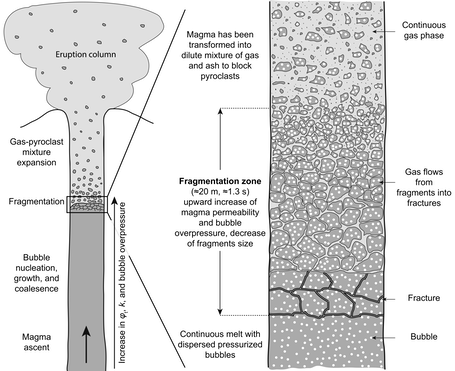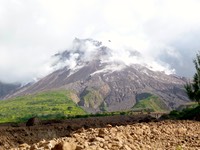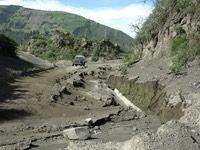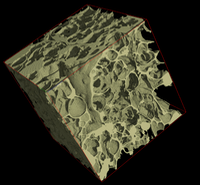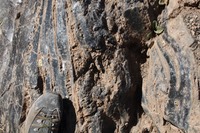The volatiles species initially dissolved in the silicic melt (mainly water) exsolve while magma ascent to the surface during a volcanic eruption. This occurs via the nucleation, growth and coalescence of gas bubbles that may form a connected path allowing gas to escape out of the magma. The degassing mainly controls the eruption style by releasing, or not, the pressure inside the magma. The porosity and matrix-glass water content of pyroclasts are thus integrations of all the degassing processes that occur before, during, and after, an eruption.
During my Ph.D with Tim Druitt at the Laboratoire Magmas et Volcans, I studied degassing processes using textural and chemical analyses of pyroclasts from the 1997 Vulcanian explosions of Soufrière Hills Volcano, in Montserrat. I helped in buidling a model of degassing processes during these explosions (Giachetti et al. 2010, 2011; Burgisser et al. 2010, 2011). During my postdoctoral appointment at Rice University, I focused my work on the rehydration of volcanic glass, and how this post-eruptive process can affect the water contents actually measured in the matrix-glass of pyroclasts (Giachetti and Gonnermann 2013). Together with my postdoctoral mentor Helge Gonnermann and colleagues Jim Gardner (U of Texas in Austin) and Tom Shea (U of Hawai), we developped a method to be able to discriminate magmatic (primary) from atmopheric/meteoric (secondary) water in the matrix-glass of natural pyroclasts and showed that the magma is largely degassed during a Plinian eruption and can be largely rehydrated afterwards (Giachetti et al. 2015).
I am currently modeling the degassing of magma during the Glass mountain eruption of Medicine Lake in order to constrain parameters such as the conduit size or the mass discharge rate of this 1,000 years old eruption. I analyzed the porosity and permeability of pumices during this eruption and we modeled their relationships using a model based on the percolation theory. We showed that, contrary to the conventional view, magma fragmentation during sustained explsoive eruptions occurs over a finite lengths of few tens of meters during which magma texture, and especially permeability, evolves rapidly.
